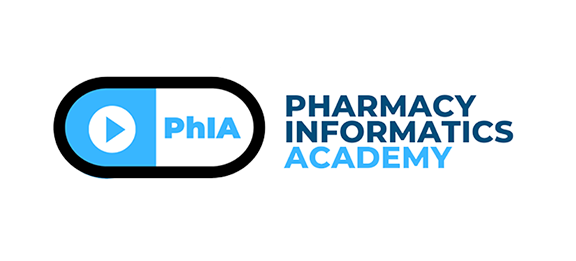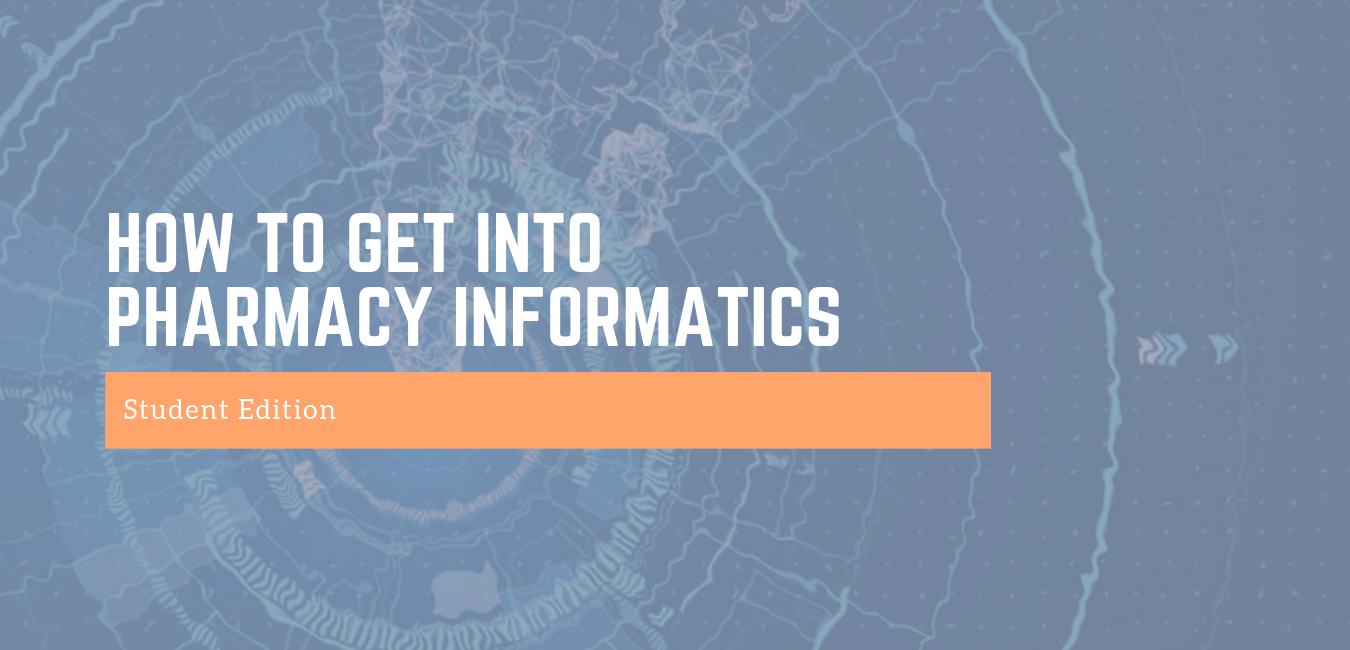How to Get Into Pharmacy Informatics: Student Edition
This post was originally posted on Pharmacy, IT, & Me and are reflective of Dr. Tony Dao’s thoughts on how to get into pharmacy informatics.
As a pharmacy school guest lecturer and previously an APPE pharmacy informatics preceptor, I’ve had a lot of students ask me about how to get more training or involvement in pharmacy informatics so that they are prepared to succeed after graduation. The field is still relatively new compared to the rest of the pharmacy profession and there’s an understandable high interest in it due to the evolution of technology.
I will break down what students can do in what I call the 4 E’s: Explore, Evolve, Expose, and Embrace.
Explore
So what do I mean when I say “explore”? You have to put in some work to explore what physical opportunities there are out there for you to shadow a pharmacist that works in the informatics field. As a student, you have two primary opportunities for being in a practice setting: IPPE’s and APPE’s. Review your school’s partnerships with the practice sites to see if there are any sites that have a rotation for pharmacy informatics. If there are not, the next best thing is finding a site that has a pharmacy informaticist already working there who is open to having you shadow them and ask questions.
What about if you are currently working? Are you working in a setting that has an informatics pharmacist? Try to see if they will allow you to shadow or ask them questions about what they do. Sometimes it’s hard to grasp what pharmacy informatics is about until you see it and experience it for yourself.
Evolve
There are many great resources out there to learn more about pharmacy informatics. The most active one directly related to pharmacy informatics is through ASHP’s Section of Pharmacy Informatics and Technology. This is a great avenue to see what other informatics pharmacists are talking about or working on. The section also has several webinars available for you to learn about some key concepts that every pharmacy informaticists should know.
In addition, remember that you don’t always need to look for just pharmacy informatics. Healthcare informatics is an even larger field and you can learn a lot by just looking at the healthcare IT news. You can also find a lot of value by attending certain conferences that are put out by healthcare technology organizations like AHIMA or HIMSS. There are also certificate programs out there if you’d like to get yourself certified in the role, such as the CAHIMS certificate from HIMSS.
Another thing to take note is if you want to learn anything related to programming, there are many avenues for that. Healthcare data are mostly stored in what’s called relational databases, and a very archetypal one is in SQL. Learning and understanding how SQL works would give you a good head start in understanding how data is stored across health systems. You can find some free courses at W3 Schools.
One more thing to take note is that there are actually PGY2 residency programs out there for pharmacy informatics. If you are interested, you can find these by looking through ASHP’s list of informatics residencies. They provide a great overarching view and training into applicable skills for when you become an informatics pharmacist in the real world.
Expose
The best way to learn is to take action and do something. What I mean by expose is to take opportunities that are available. Sometimes it’s difficult to identify those opportunities, but you’ll get it over time. For example, for me, when I was on my APPE’s rotation, one of the projects that was requested by one of my preceptors was to create some sort of training for medical residents to go through and learn how to do basic prescription writing. I found this as an opportunity to incorporate technology into the training by creating a Flash-based learning module that included guided learning and tests. This was a way for me to expose myself into using technology in a manner to improve physician education.
Another example that I have seen is through how one of my former students observed the pharmacy workflow for a few days to identify gaps in the workflow that she believed would be improved with technology. She brainstormed several ideas and showed great understanding in the medication use process and how data or technology can improve the flow for patient care.
Basically, the best thing to do here is to have an open mind and always think that nothing is perfect, and everything has room for improvement. With that mentality, you’ll be able to identify processes in your rotations where you can take on projects that can benefit the patients and colleagues around you.
Embrace
The last E stands for embrace, and this is to remember to embrace what you are actually doing. Make sure that if you are in the process of learning, give it your all. People around you will definitely notice if you are really into this role or if you are just trying to look good.
Dr. Alex Vu, a guest on one of the previous episodes, definitely took the embracing step to heart. When he was a student at where I used to work, he took on each project with enthusiasm and commitment. He made sure to see through to some of the projects’ ends, and he even showed interest in being part of the go-live cutover for our EHR conversion. The entire time, he took in and learned as much as he could, which eventually led him to his current role today as an Epic Willow Applications Analyst over at UCLA’s health system.
So remember, as a student, you are given an opportunity to learn as much as you can before getting into the real world, so take advantage of that. Once you start working as a pharmacist, it will be more difficult to.


April 15, 2020 @ 2:54 pm
Would a certification in Informatics suffice to achieve employment? I’ve been considering doing the coursework through APhA. Is this worth the effort, or are employers considering those who have completed the PGY2 residency?
April 17, 2020 @ 6:40 pm
Hello Barbara,
Great question! A certification is definitely great for your own knowledge and professional development, and it may help you get your foot in the door for the interview. Having said that, informatics roles also look for experience, whether it be in informatics itself or through other projects that may have honed transferable skill sets. I also highly suggest just reaching out to individuals who are already in the field to see if there are any projects you can shadow or maybe even participate in. Wishing you the best of luck and let us know if you have any other questions or comments! You can email us directly at [email protected]
April 30, 2020 @ 5:39 am
Hi Tony,
Really enjoyed reading this, especially the part about the “Explore”
Quick question, I have a pharmacy degree from overseas (NZ) and am working to get my Masters in Health Informatics from a U.S. college (Boston University). Would it be very difficult to use my foreign degree to get a job in pharmacy informatics? Or is having a PharmD almost mandatory?
Thanks
Abraham
April 30, 2020 @ 10:21 am
Hi Abraham,
Thank you for the comment! It really depends on the institution that you apply for and the role’s requirements. PharmD is not necessarily required because there are still pharmacists in the U.S. that are BPharms, and if you look at roles that are “pharmacy analysts”, you may find that these roles just require you to have pharmacy experience. These roles may only require you to have a minimum of a pharmacy technician license/experience rather than a full-fledged pharmacist. Look into some of the positions that are available on some jobs sites to get a better understanding of roles and requirements available in your location of interest.
Let us know if you have any further questions!
May 11, 2020 @ 1:30 am
Hi Tony
Thank you for the reply.
Becoming a pharmacy tech sounds like a good idea since I am not eligible to convert my NZ pharmacist license into the US.
I have subscribed to the pharmacy Informatics academy page on LinkedIn, I look forward to more content 👍🏻👍🏻